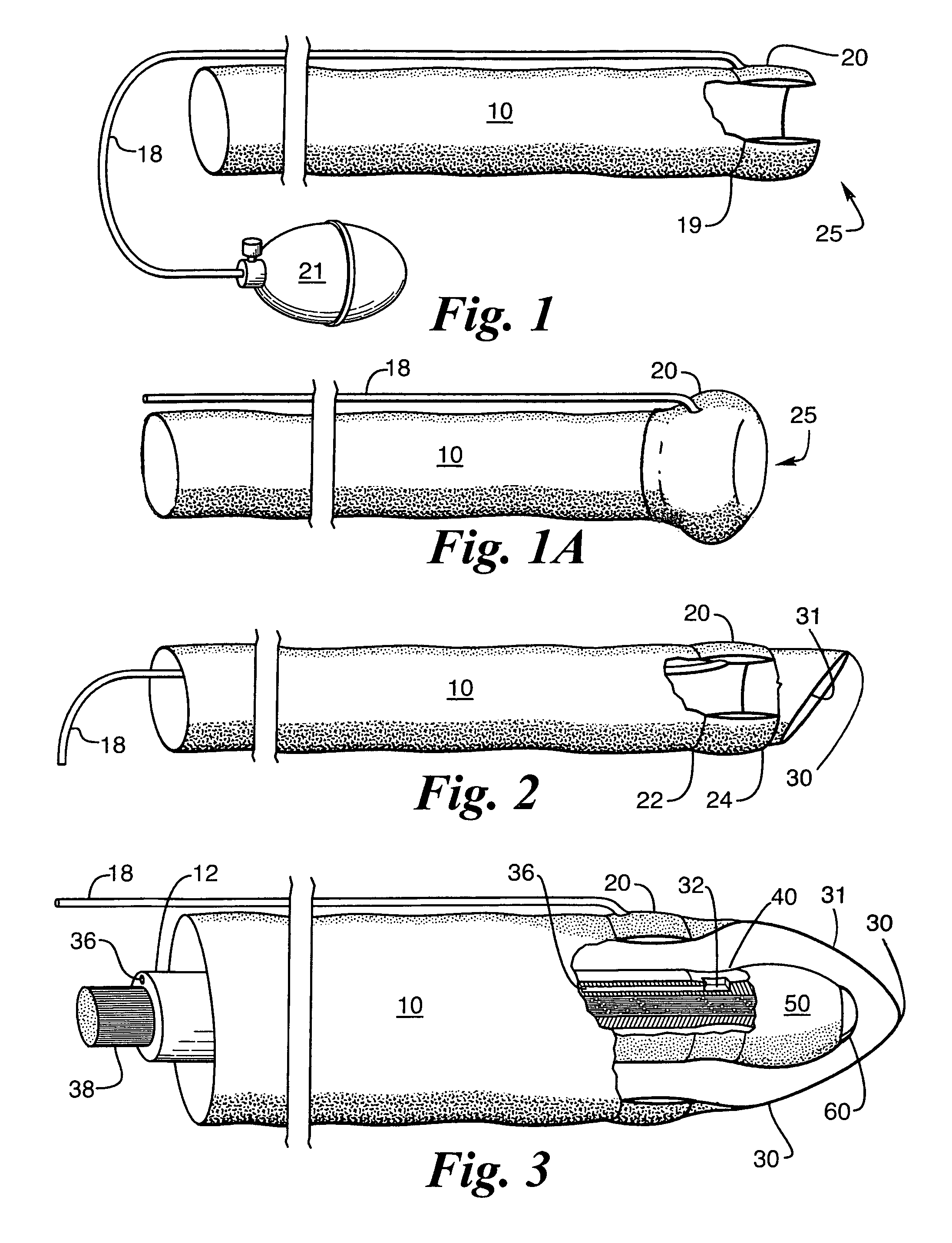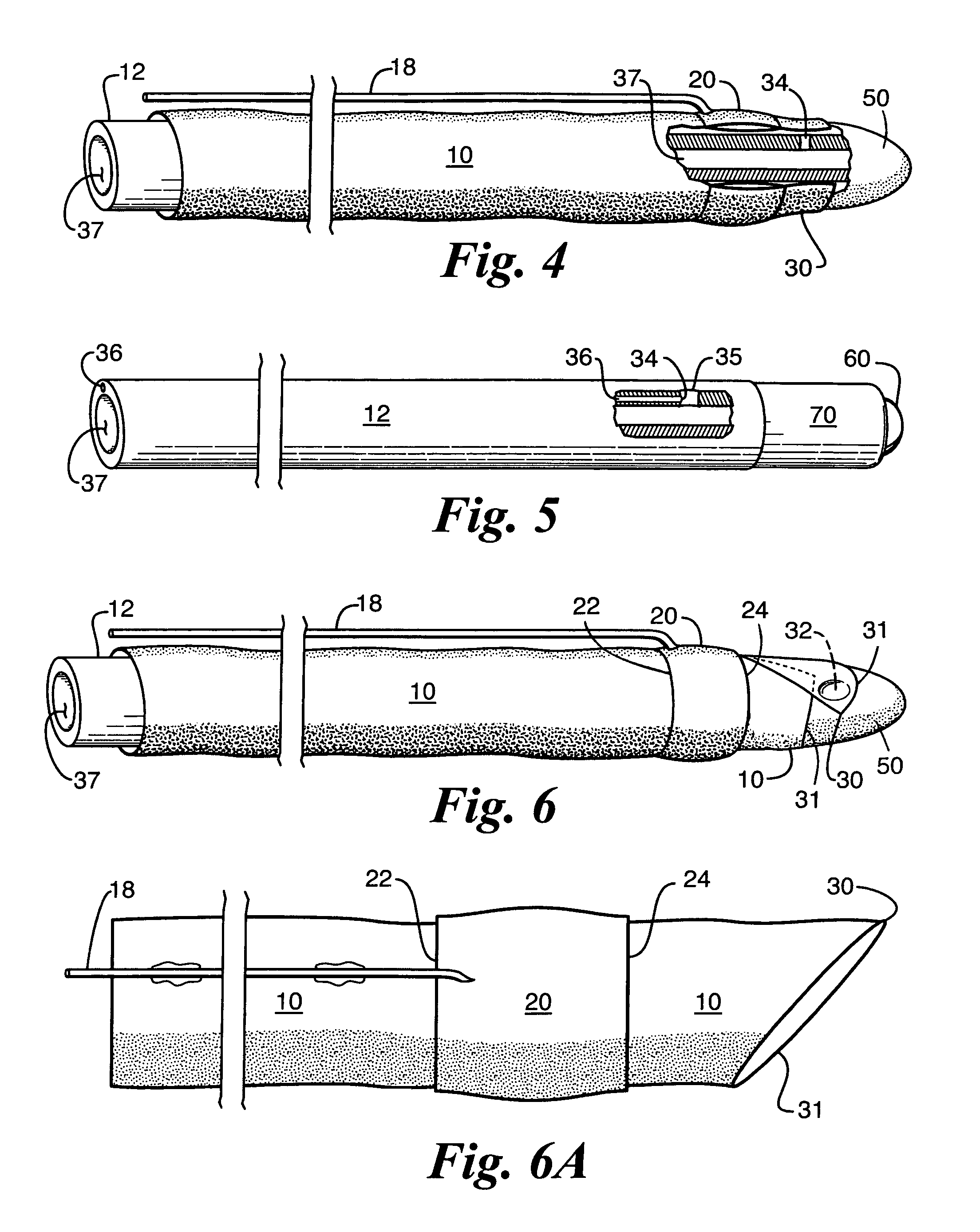Flaccid tubular membrane and insertion appliance for surgical intubation and method
a tubular membrane and intubation technology, applied in the field of medical science, can solve the problems of urethral obstruction, substantial burden on the delivery of effective care through the healthcare system, and insufficient flexibility of protective sheath,
- Summary
- Abstract
- Description
- Claims
- Application Information
AI Technical Summary
Benefits of technology
Problems solved by technology
Method used
Image
Examples
Embodiment Construction
[0035]A sheath 10 in accordance with the present invention is a flexible flaccid and membranous tube with an annular balloon 20 at one end. The sheath functions to protect tissue in a body orifice during subcutaneous surgical procedures or intubations. A very thin sheath is preferred to be more easily inserted and to accept a wider range of surgical tool diameters by being able to expand and contract to the instrument size of the tools being used by the surgeon during the procedures and to be more easily removed after a procedure since it is of a smaller cross section when it has thinner membranous walls.
[0036]As shown in FIG. 1 and FIG. 1A a sheath 10 has a balloon 20 formed at the distal end 25 of the sheath. The balloon may be formed by simply manually expanding the free distal end then everting and sliding the sheath material back toward the opposite end and adhesively bonding or otherwise attaching the free edge of the sheath to the underlying material of the sheath at 19 near ...
PUM
 Login to View More
Login to View More Abstract
Description
Claims
Application Information
 Login to View More
Login to View More - R&D
- Intellectual Property
- Life Sciences
- Materials
- Tech Scout
- Unparalleled Data Quality
- Higher Quality Content
- 60% Fewer Hallucinations
Browse by: Latest US Patents, China's latest patents, Technical Efficacy Thesaurus, Application Domain, Technology Topic, Popular Technical Reports.
© 2025 PatSnap. All rights reserved.Legal|Privacy policy|Modern Slavery Act Transparency Statement|Sitemap|About US| Contact US: help@patsnap.com



